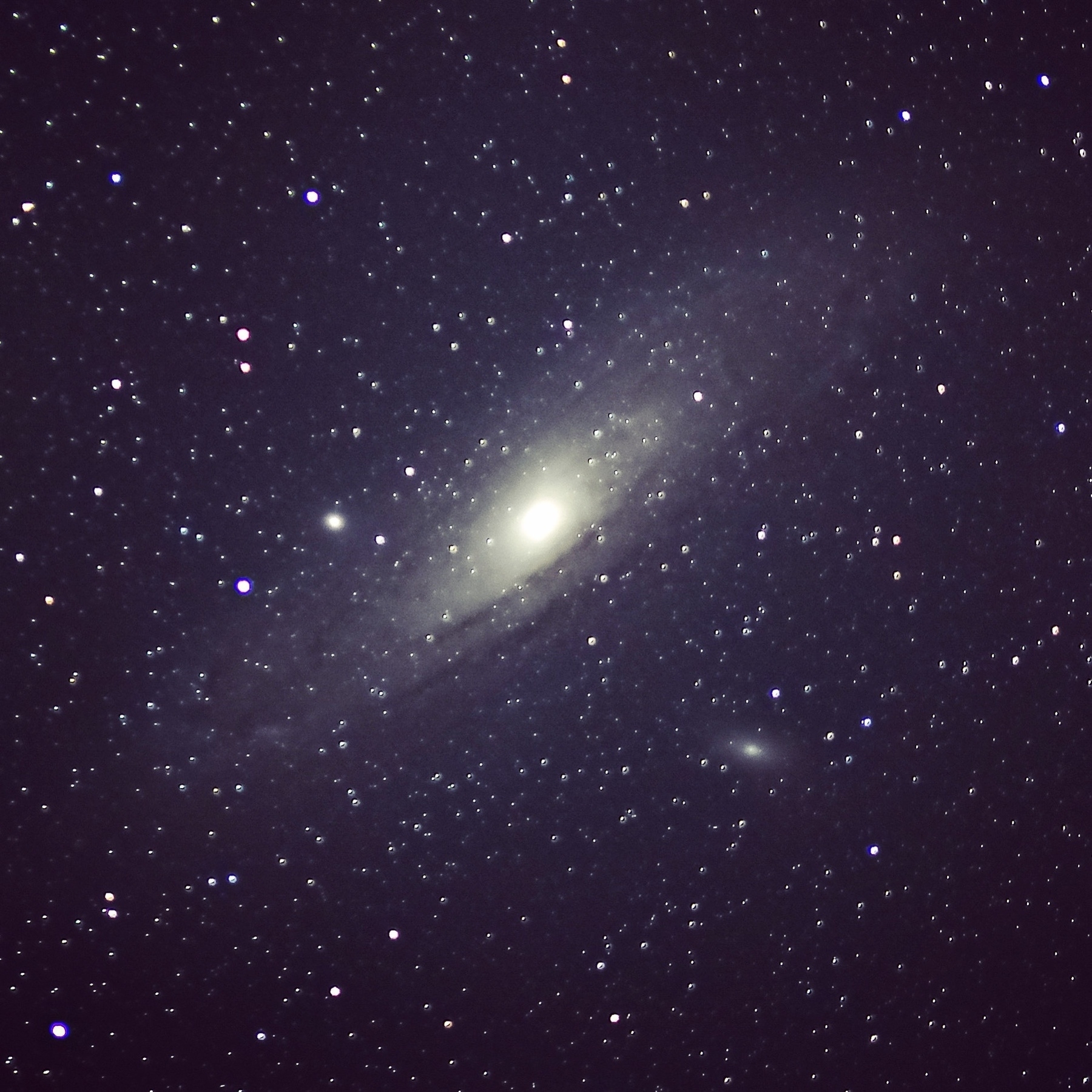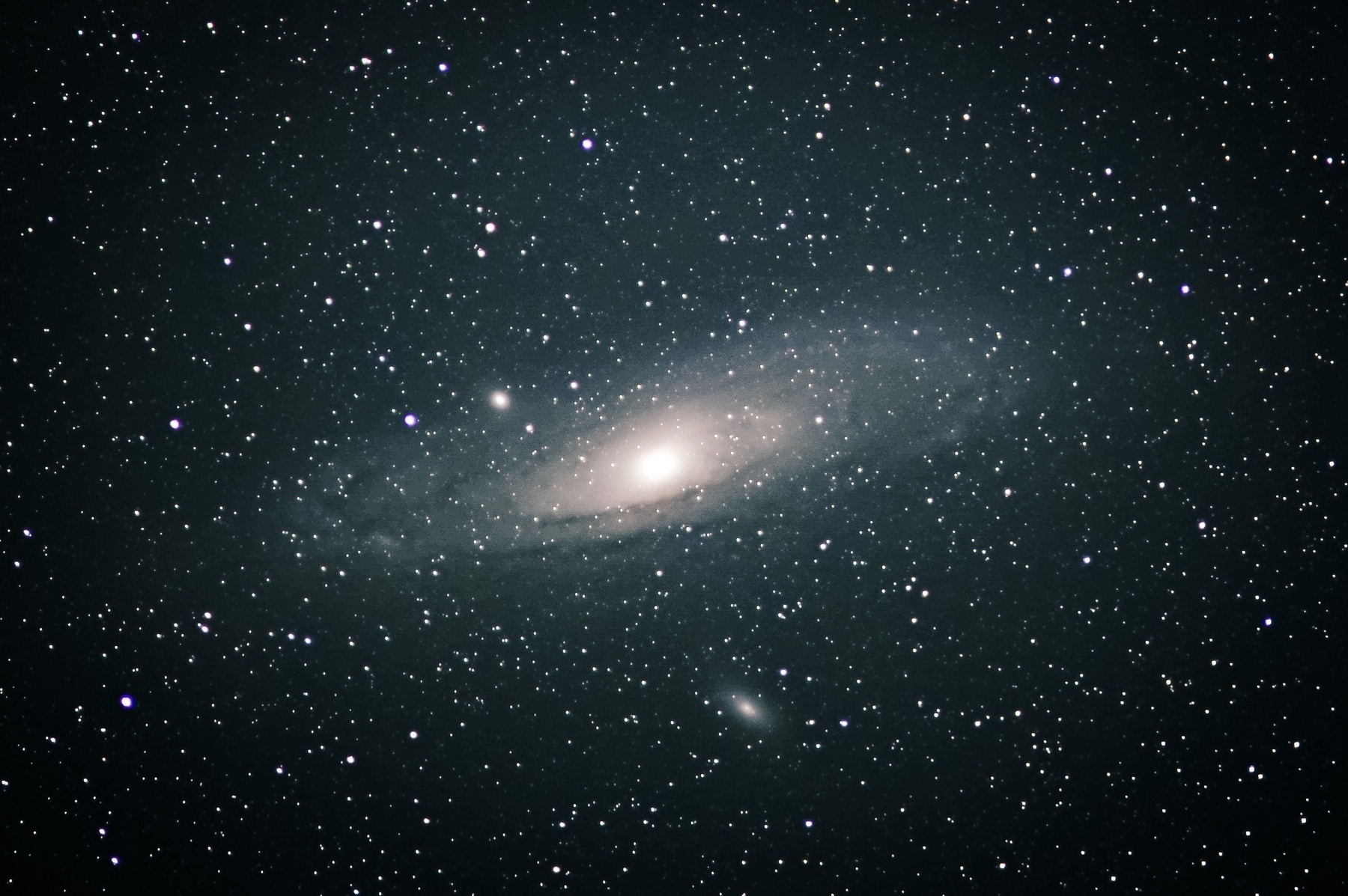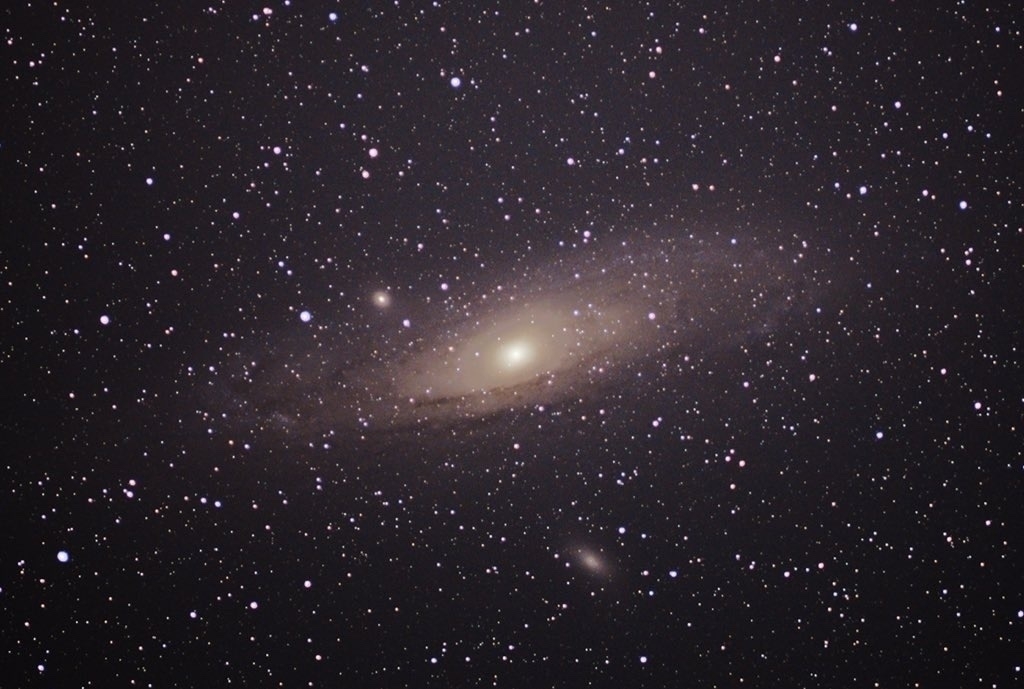andromeda
Wide angle long exposure photos
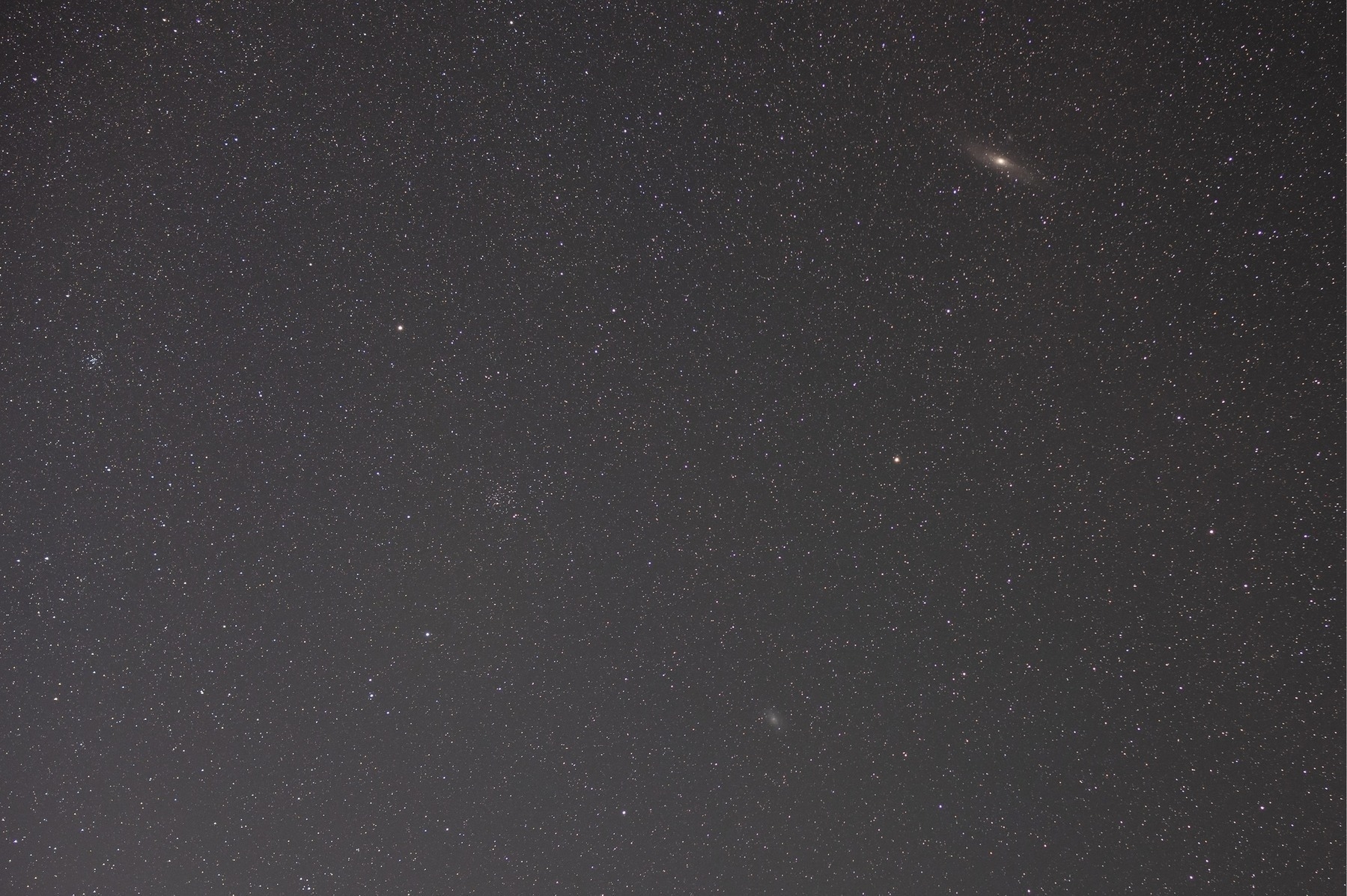
Playing with long exposure (3 mins) photos with a 40 mm lens attached to Nikon Z6 on a SkyWatcher star tracker. Here is one that shows Andromeda galaxy (M31), top right and Triangulum Galaxy (M33), bottom center. Also two open star clusters: M34 in Perseus (left edge) and NGC 752 in Andromeda (left center). This is just a single image with contrast adjustments in Photoshop, not a stack of multiple images.
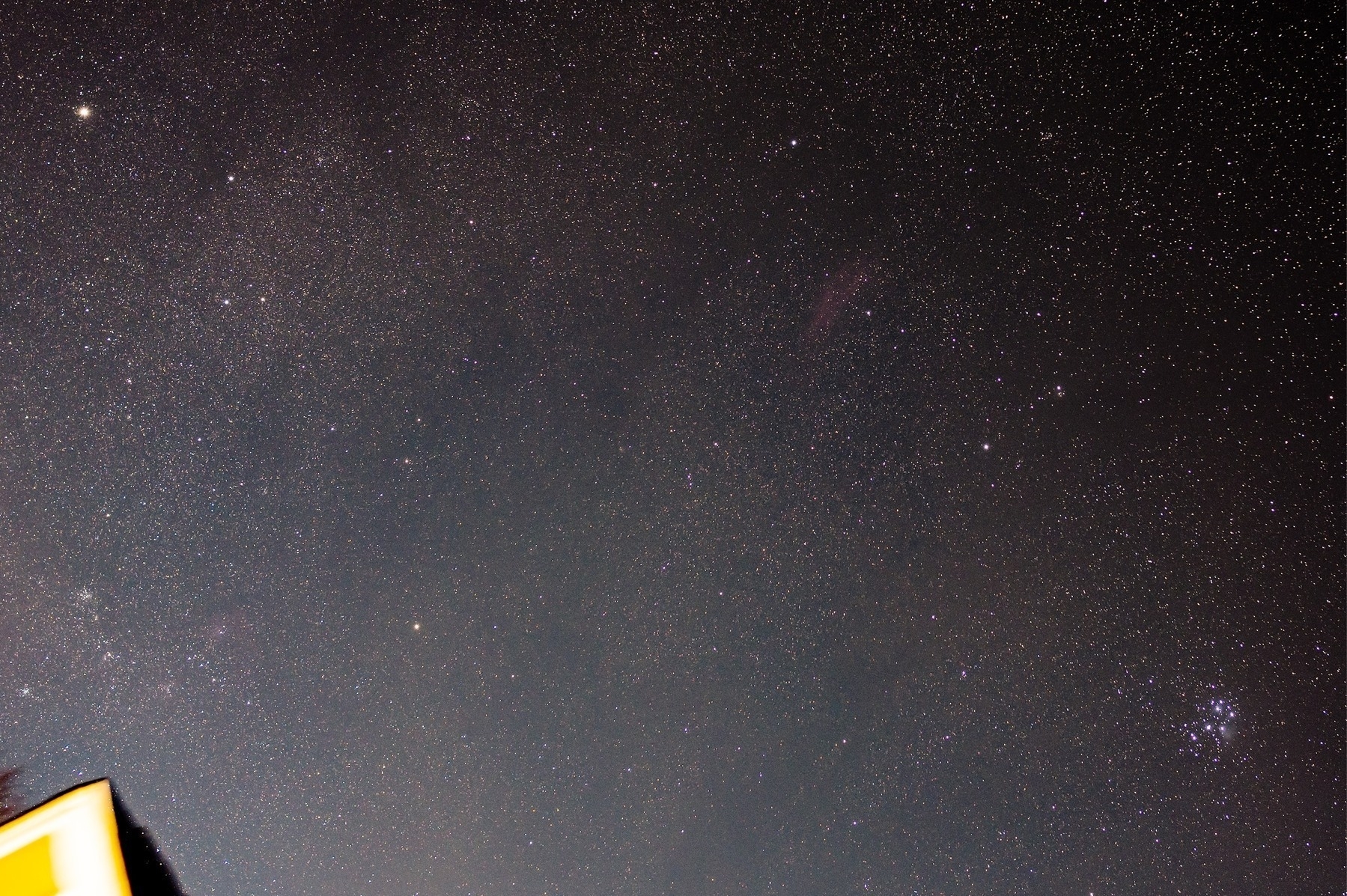
Another long exposure (3 min) photo showing Pleiades (bottom right), and ghostly reddish glow of California nebula (right of center). The bright star at top left is Capella and just above the roof, open clusters M36 and M38 are seen along with Flaming star and tadpoles nebula region in Auriga.
Andromeda galaxy - Sep2022

My best Andromeda galaxy image so far. It is only 30 minutes of total exposure but autoguiding makes a huge difference by making all the details clear and sharp. Have to collect more data on the next clear night.
The Andromeda Galaxy, also known as Messier 31 (M31) is a barred spiral galaxy approximately 2.5 million light-years from Earth and the nearest major galaxy to the Milky Way. It is larger than Milky Way galaxy by about 25-50%. Two other galaxies are in this view - M32 (above M31) which is a satellite galaxy of M31 and M110 (bottom of frame) which is also part of the Andromeda group of galaxies.
Telescope: William Optics Zenithstar 61; focal length 360mm
Optolong UV/IR cut filter
Camera: ZWO ASI533MC-pro, cooled to -10C
1 minute exposures with auto guiding; total exposure of 30 minutes;
used dark, flat, bias calibration frames
Processed in SIRIL and PhotoShop
Andromeda Galaxy
The Andromeda Galaxy, also known as Messier 31, M31, or NGC 224 and originally the Andromeda Nebula, is a barred spiral galaxy approximately 2.5 million light-years from Earth and the nearest major galaxy to the Milky Way. ... From Wikipedia
This is one of those objects that can be easily seen with naked eyes under dark skies. I have seen it many times that way and with the aid of a telescope. It still appears as a smudge with small amateur telescopes. Unless the astrophotography techniques of long exposures and stacking is applied, its beauty is not apparent. Last year, during the pandemic I started playing around with astrophotography and this was one of the first targets that I imaged. Here are 3 images taken over the last few months and it is obvious that my technique is getting better with time. I like seeing the dust lanes making the spirals of the galaxy. Hoping to get better images of M31 again later in the year when it rises again in the East.
Stargazings 10-18-08
It was a quick half hour session with Adit calling me to come in every 5 minutes. A clear and cold night made everything look very beautiful. These sky conditions along with the good quality optics of William Optics Megrez 90 were responsible for excellent viewing with good contrast. Here is what I was able to catch:
Jupiter: All four moon visible; all were on the same side.
M22 and M28 from Saggitarius: It was my first time to see these two clusters. They can be found around lambda Saggitarius. M22 is a big and very dense, nice looking, globular star cluster. Very easy to spot. M28 is much smaller and fainter.
M57: “Ring nebula” a planetary nebula from Lyra.
M56: a globular star cluster from Lyra. It lies on the straight line between M57 and Albeiro (beta-Cygnus), almost at the midpoint.
Albeiro: Famous double star in Cygnus. Two bright colorful stars: Orange and blue.
M31 and M32: Andromeda and its companion galaxy.
NGC869 and NGC884: Double cluster in Perseus.
